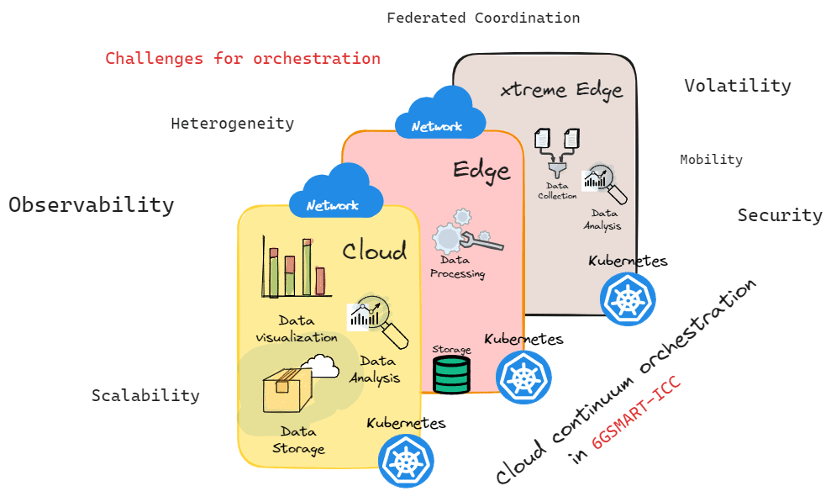
Keep up to date with our innovative initiatives.
Sign up here
In industrial environments, cloud services and the Internet of Things (IoT) converge, with the need to manage complex and diverse computing environments for service and infrastructure providers, a process called cloud continuum. In this aspect, large-scale cloud data centres require advanced orchestration systems to handle resource allocation for both the massive data generated by IoT devices and the cloud services themselves. This orchestration system requires real-time awareness of all available resources and their status to dynamically allocate resources and enable rapid application deployment.
Therefore, the cloud continuum extends beyond traditional cloud computing by incorporating energy-efficient, low-latency devices closer to data sources at the network edge. This includes extreme edge, edge, and cloud, enabling analysis, processing, storage, and data generation capabilities. Essentially, it connects cloud environments with these distributed devices that act as real-time data sources. Processing this data requires orchestration across various resources scattered throughout the continuum.

This distributed landscape presents unique challenges for orchestration solutions:
6GSMART-ICC provides a container-based orchestration solution supported by Kubernetes across this cloud-to-extreme Edge continuum.
Author: Jesús Benedicto – IT Project Manager & SW Architect at Eviden